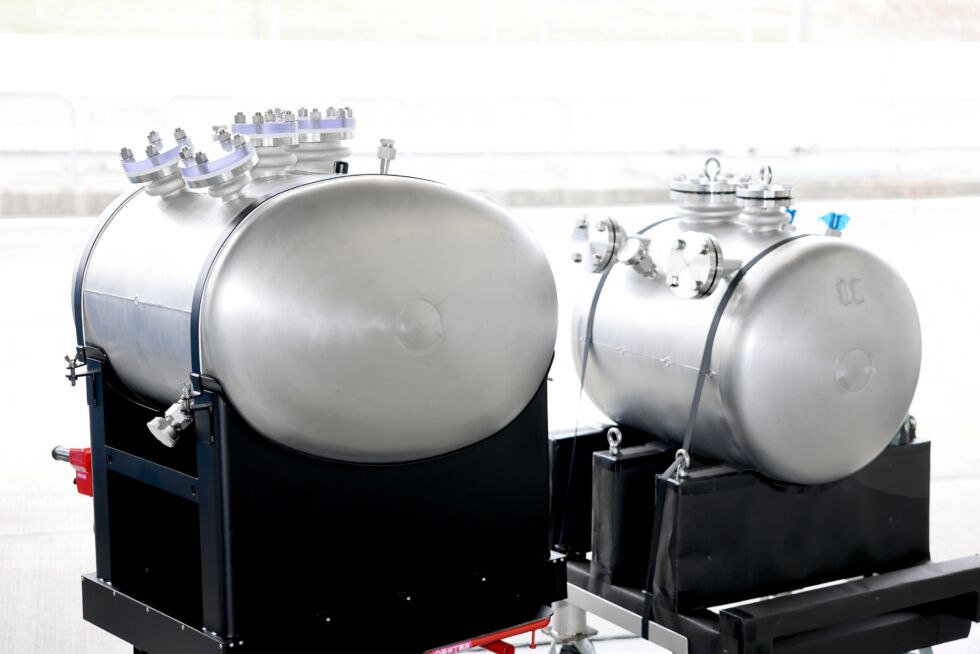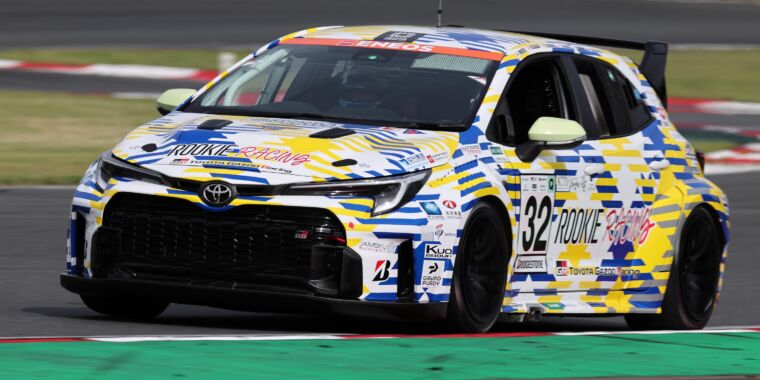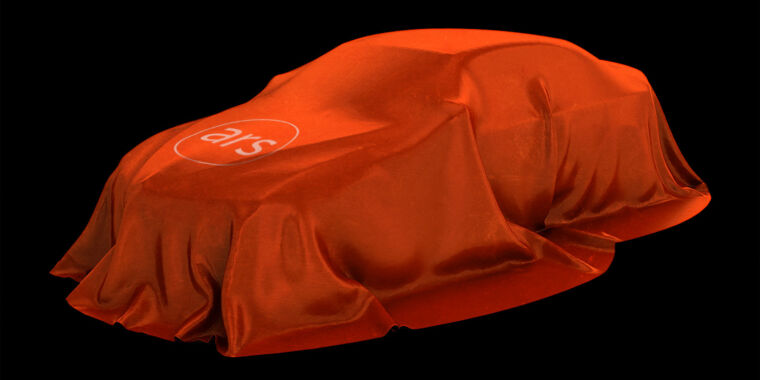Toyota tests liquid hydrogen-burning Corolla in another 24-hour race
yep, still at it —
The experience has taught it how to improve thermal efficiency, Toyota says.

Enlarge / “It got more attention than last year, and the development feels steadier, faster, and safer,” said Toyota Chairman Akio Toyoda when asked how the hydrogen-powered Corolla had improved from 2023.
Toyota
A couple of weekends ago, when most of the world’s motorsport attention was focused on Monaco and Indianapolis, Toyota President Akio “Morizo” Toyoda was taking part in the Super Taikyu Fuji 24 Hours at Fuji Speedway in Japan. Automotive executives racing their own products is not exactly unheard of, but few instances have been quite as unexpected as competing in endurance races with a hydrogen-burning Corolla.
A hydrogen-powered Toyota has shown up for the past few years, in fact, as the company uses the race track to learn new things about thermal efficiency that it says have benefitted its latest generation of internal-combustion engines, which it debuted to the public at the end of May.
With backing from its government, the Japanese auto industry has continued to explore hydrogen as an alternative vehicle energy source instead of liquid hydrocarbons or batteries. Commercially, that’s been in the form of hydrogen fuel cells, although with very little success among drivers, even in areas that have some hydrogen fueling infrastructure.
But the hydrogen powertrain in the GR Corolla uses an internal combustion engine, not a fuel cell. The project first competed in the 24-hour race at Fuji in 2021, then again with a little more success in 2022.
For 2023, there was a significant change to the car, now fueled by liquid hydrogen, not gaseous. Instead of trying to fill tanks pressurized to 70 MPa (700 bar), now it just has to be cooled to minus-253° C (minus-423° F). Liquid hydrogen has almost twice the energy density—although still only a third as much as gasoline—and the logistics and equipment required to support cryogenic refueling at the racetrack were much less than with pressurized hydrogen.

Enlarge / The new (left) and old (right) liquid hydrogen tanks.
Toyota
The liquid hydrogen is stored in a double-walled tank that was much easier to package within the compact interior of the GR Corolla than the four pressurized cylinders it replaced. This year, the tank is 50 percent larger (storing 15 kg of hydrogen) and elliptical, which proved quite an interesting technical challenge for supplier Shinko. The new tank required Toyota to rebuild the car to repackage everything, taking the opportunity to cut 50 kg (110 lbs) of weight in the process.
From the tank, a high-pressure pump injects the fuel into a vaporizer, where it becomes a gas again and then heads to the engine to be burned. Unfortunately, the pump wasn’t so durable in 2023 and had to be replaced twice during the race, costing hours in the process.
For 2024, a revised pump was designed to last the full 24 hours, although during testing, it proved to be the source of a fuel leak, wasting the team’s time while the problem was isolated. Luckily, this was much less severe than when, in 2023, a gaseous hydrogen pipe leak in the engine bay led to a fire at a test.
Sadly, the new fuel pump had intermittent problems actually pumping fuel during the race, most likely due to sloshing in the tank. Later on, an ABS module failure sidelined the car in the garage for five hours, and while the team was able to take the checkered flag, it had completed fewer laps in 2024 than in 2023.
But 24-hour racing is really hard, and the race wasn’t a write-off for Toyota. It achieved its goal of 30-lap stints between refueling, and while the new pump wasn’t problem-free throughout the race (nor had to run for the entire 24 hours), it didn’t need to be replaced once, let alone twice.
Enlarge / For 2024, there was an automated system to clean the CO2 filter.
Toyota
I’m still scratching my head slightly about the carbon capture device that’s fitted to the car’s air filter. This adsorbs CO2 out of the air as the car drives, storing it in a small tank. It’s a nice gesture, I guess.
Since starting development of the hydrogen ICE engine, Toyota has found real gains in performance and efficiency, and the switch to liquid hydrogen has cut refueling times by 40 percent. All of those make it more viable as a carbon-free fuel, it says. But the chances of seeing production vehicles that get refueled with liquid hydrogen seem remote to me.
Even though Toyota still has optimism that one day it will be able to sell combustion cars that just emit water from their tailpipes, it’s pragmatic enough to know there needs to be some real-world payoff now beyond that the chairman likes racing and people like to keep him happy.
“Hydrogen engine development has really contributed to our deeper understanding of engine heat efficiency. It was a trigger that brought this technology” Toyota CTO Hiroki Nakajima told Automotive News at the debut of the automaker’s new 1.5 L and 2.0 L four-cylinder engines, which are designed to meet the European Union’s new Euro 7 emissions regulations, which go into effect in 2027.
Toyota tests liquid hydrogen-burning Corolla in another 24-hour race Read More »





